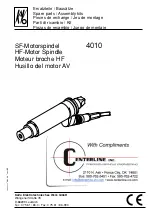
Stationary VLA Batteries,
Installation and Operation Instructions
Page 11 of 17
w w w. b a e b a t t e r i e s u s a . c o m
R e v : 0
2
1 9
7.0.1 COMMISSIONING WITH FLOAT CHARGE VOLTAGE – 2.23 VPC
Place the batteries into service on float charge at 2.23 VPC. After a period of 24
hours the batteries should be in a fully charged condition.
Although not necessary for initial commissioning, some users have standard
commissioning processes with a 24 to 72 hour equalize charge for their strings
prior to placing them into service. This equalize charge will not harm the battery.
7.0.2 COMMISSIONING WITH HIGHER CHARGING VOLTAGES - 2.33 to 2.40 VPC
Place the batteries into service on equalize charge at 2.33 to 2.40 VPC. After a
period of 24 to 72 hours the batteries should be in a fully charged condition.
Once the commissioning charge is completed, measure and record the electrolyte
specific gravity and temperature of each cell. A proper range hydrometer and
thermometer are included with the standard BAE battery accessories. The following is
the nominal acid density (Specific Gravity) at the maximum electrolyte level at a fully
charged condition:
Single Cell Nominal Specific Gravity and Tolerance for the BAE OGi and OPzS Cells:
1.240
±
0.01 kg/l at 25°C (77°F); yielding a range of 1.230 to 1.250 kg/l
Note that the level of electrolyte in the cell will affect the reading – see Section 10.
for
details.
Once the commissioning charge and electrolyte readings are completed, if the electrolyte
levels are not at the maximum level, you may top off cells to the maximum level with
purified or distilled water.
8.0 INSTRUCTIONS FOR OPERATION
This section provides the operating instructions and detailed behavior of the BAE VLA
lead-acid of batteries.
The instructions for operation and maintenance contained in subsequent sections should
be combined or may be supplemented by site specific detailed procedures for necessary
testing and inspections. Special testing may be required under certain conditions (DIN,
VDE, and KTA for export) and IEEE for domestic applications as set forth by the user.
8.1 FLOAT CHARGING
BAE Stationary lead-acid storage batteries are designed so that optimum life and
available capacity are achieved with a float voltage of 2.23 VPC +/- 1% between 10°C
(50°F) and 30°C (86°F).
Total string float voltage will be 2.23 V x number of cells +/-1% nominal.
Higher or lower charging voltages can be detrimental as overcharging or undercharging
will reduce the batteries life expectancy.
8.2 EQUALIZATION CHARGING
After deep discharges, or inadequate recharging, equalizing charging is necessary. This
may be carried out as follows:
a) At an increased voltage of (2.33 to 2.40 V) x number of cells up to a maximum of 72
hours.




































